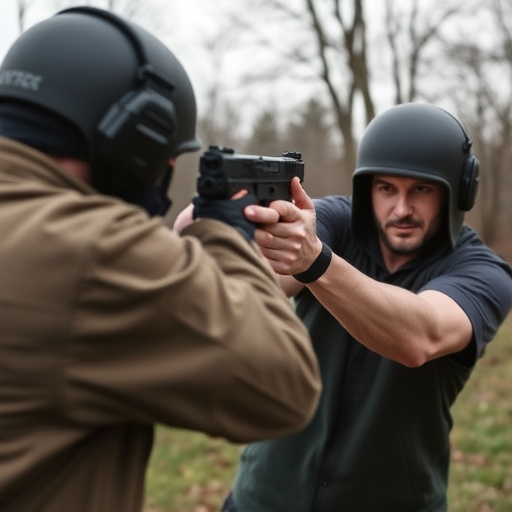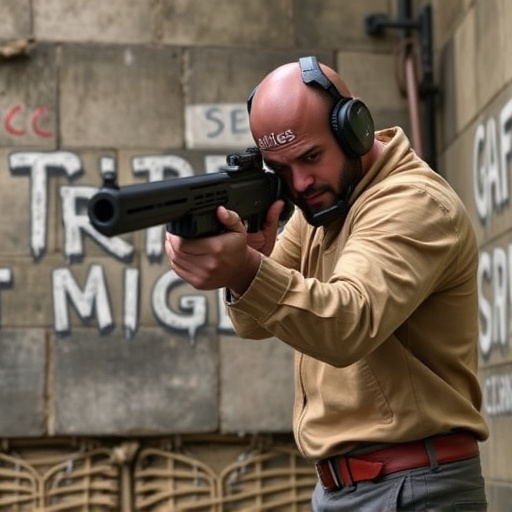Understanding how electrical current spreads in stun devices is key to evaluating their safety and effectiveness. The price range for quality stun guns reflects design complexity, material choices (like copper or aluminum), and circuit design, which collectively impact current distribution. Advanced models feature strategic materials and engineering to ensure uniform current flow, preventing accidents and enhancing user safety. By knowing these patterns, consumers can balance the price range for quality stun guns with advanced technologies for optimal performance and safety. Reputable manufacturers rigorously test stun guns within this price range, ensuring they meet regulatory standards, offer reliable performance, and provide peace of mind in critical situations.
Electrical current spread patterns play a critical role in understanding the effectiveness of stun guns, pivotal in personal defense. This article delves into the intricate details of how these patterns function and their implications. We explore the design considerations of stun guns, emphasizing the impact on current distribution for maximum stun effect. Additionally, we examine quality assurance methods and test standards, ensuring consumer safety. The price analysis segment uncovers cost factors influencing high-quality stun guns, providing insights into the price range for quality stun guns.
- Understanding Electrical Current Spread Patterns
- The Role of Stun Guns and Their Design Considerations
- Quality Assurance and Testing Methods for Stun Guns
- Price Analysis: Uncovering the Cost Factors for High-Quality Stun Guns
Understanding Electrical Current Spread Patterns

Understanding Electrical Current Spread Patterns plays a crucial role in assessing the effectiveness and safety of stun devices, especially within the context of self-defense tools like stun guns. When considering a price range for quality stun guns, it’s important to understand that the design and materials significantly influence current spread. Advanced stun guns employ sophisticated engineering to ensure precise and even distribution of electrical current across their contact points, maximizing impact while minimizing risk of harm to the user.
This optimal current spread is achieved through strategic use of conductive materials and careful circuit design. For instance, high-quality stun guns often feature copper or aluminum conductors that facilitate uniform current flow, ensuring no single point becomes overly charged. This uniformity is key in preventing uneven distribution of force, which could lead to accidental injuries. By understanding these patterns, consumers can make informed decisions when evaluating price range for quality stun guns, balancing cost with advanced current spread technologies for enhanced safety and efficacy.
The Role of Stun Guns and Their Design Considerations

Stun guns, also known as electronic control devices (ECDs), are non-lethal weapons designed to temporarily incapacitate a target through electrical impulses. Their primary role is to provide a less-than-lethal option for law enforcement and personal defense, allowing users to subdue assailants without causing permanent harm. The design of stun guns involves careful consideration of several factors, including power source, electrode configuration, and output voltage.
The price range for quality stun guns varies significantly based on these design elements. Higher-end models often incorporate advanced features like adjustable voltage settings, powerful batteries, and ergonomic designs. These features enhance the weapon’s effectiveness and user comfort but come at a premium. Conversely, budget-friendly options may have simpler constructions, lower voltage outputs, and shorter battery lifespans. However, even within the more affordable range, quality stun guns can offer reliable performance and safety features that are crucial for their intended applications.
Quality Assurance and Testing Methods for Stun Guns

Quality Assurance and Testing Methods for Stun Guns play a crucial role in ensuring their safety and effectiveness. Reputable manufacturers adhere to stringent standards, employing advanced testing techniques to verify performance across various scenarios. These methods include simulation of real-world conditions, stress tests to withstand extreme forces, and precise measurement of electrical current spread patterns to guarantee consistent and controlled delivery.
Testing involves rigorous evaluation within a defined price range for quality stun guns. This encompasses assessments of battery life, charge retention, and the intensity of the shock delivered. By combining these measures, manufacturers can offer reliable products that meet or exceed regulatory requirements, providing users with peace of mind and ensuring the stun gun performs optimally in critical situations.
Price Analysis: Uncovering the Cost Factors for High-Quality Stun Guns

When analyzing the price range for quality stun guns, several key cost factors come into play. These include the materials used in construction, the complexity of design and manufacturing processes, safety features integrated into the device, and regulatory compliance standards. High-end stun guns often incorporate advanced materials like aerospace-grade aluminum or durable polymers, ensuring longevity and performance under harsh conditions.
The inclusion of sophisticated safety mechanisms, such as automatic shut-off switches and multiple safety locks, significantly drives up costs. Moreover, adherence to stringent international regulations necessitates rigorous testing and certification processes, adding another layer of expense. These factors collectively contribute to the overall price range for quality stun guns, making them a significant investment for personal or professional use.
Electrical current spread pattern analysis is a critical aspect of understanding and enhancing the effectiveness of stun guns. By delving into this topic, we’ve explored how these patterns influence device performance and safety. The discussion on stun gun design considerations has highlighted the importance of engineering for optimal shock delivery while ensuring user safety. Quality assurance and testing methods are vital to maintaining consistent performance across batches, and our price analysis reveals a clear correlation between cost and quality in the market for high-quality stun guns, with price ranges offering varied options for different budgets.
